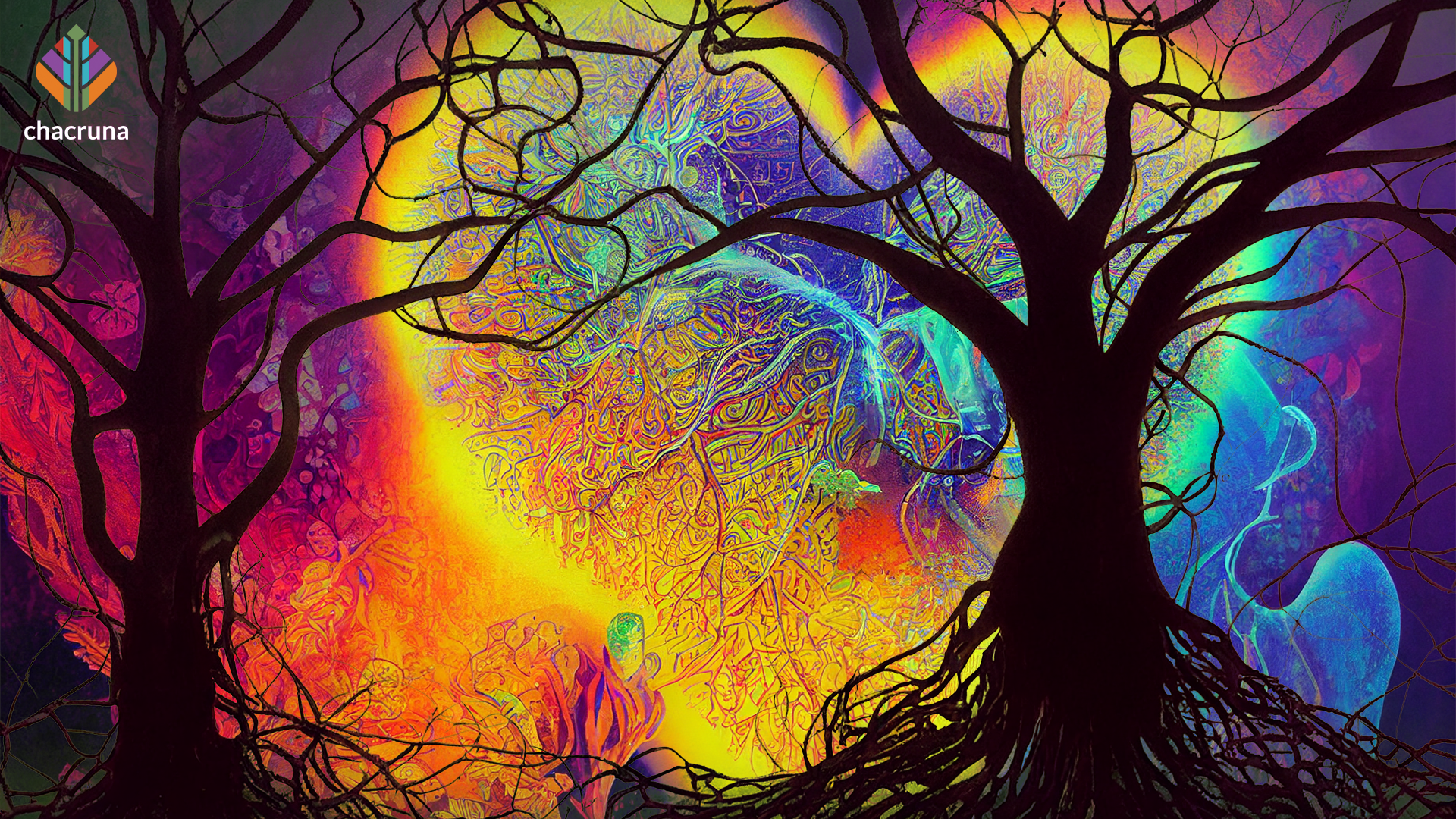- Chacruna Survey Results on the Awareness of Sexual Abuse in Ayahuasca Settings - January 31, 2023
- Indigenous Reciprocity Initiative of the Americas: A Respectful Path Forward for the Psychedelic Movement - April 23, 2022
- Creating Awareness on Sexual Abuse in Ayahuasca Communities: A Review of Chacruna’s Guidelines - February 8, 2022
The Chacruna Ayahuasca Survey launched in English and Spanish in the Spring of 2020 and aimed to understand whether the Ayahuasca Community Guide for the Awareness of Sexual Abuse was having an effect on individual’s understandings of how sexual abuse (SA) and sexual exploitation can occur in ayahuasca settings. Chacruna was also interested in learning whether respondents had been exposed to sexual abuse in ayahuasca settings so as to better evaluate the extent of sexual abuse. Lastly, the survey aimed to evaluate the impact that the Guidelines have had on the survey respondents.
The Guidelines & Legal Resources:
Chacruna’s Ayahuasca Community Guide for the Awareness of Sexual Abuse has been online since Autumn 2018 and is published in 14 languages. It is downloadable for free as a service to the psychedelic community. The languages include English, Spanish, Portuguese, Italian, French, German, Dutch, Russian, Ukrainian, Standard Arabic, Levantine Arabic, Czech, Slovakian, and Danish. As of January 25, 2023, the guideline has been downloaded 28,880 times.
Chacruna also developed a Legal Resources Companion to the Guidelines available in English and Spanish, which is also downloadable for free. It offers information on a country-by-country basis (Peru, Brazil, Costa Rica, Bolivia, and Mexico) regarding government laws and policies regarding sexual abuse. It provides information and contacts for reliable centers and resources where one can promptly seek information and support from trustworthy organizations, if needed.
Both the Guidelines and the Legal Resources were created through collaboration with people across the ayahuasca community, including legal and sexual abuse experts and knowledgeable practitioners and participants in the countries they focus on.
Both the Guidelines and the Legal Resources were created through collaboration with people across the ayahuasca community, including legal and sexual abuse experts and knowledgeable practitioners and participants in the countries they focus on. These collaborative efforts have been crucial to this initiative and Chacruna’s continuing commitment to spreading awareness about sexual abuse across ayahuasca communities. For further details on the crafting of the Chacruna Guidelines, click here. Furthermore, Emily Sinclair traveled to Peru to distribute hard copies of the safety guidelines to tour agencies selling ayahuasca ceremonies, ayahuasca retreat centres, as well as the regional tourism offices and relevant NGO’s.
Sample size:
The survey attracted 2,071 respondents. Yet the total number of cases included in the analysis is 745 due to attrition. Attrition was not caused by systemic errors. Survey attrition is common and expected; many individuals may think that the topic is relevant to them and may start the survey and then drop out. The study was designed so that people who didn’t know what ayahuasca was would not be eligible to proceed with the questionnaire and thus be disqualified to participate. Also, it might be speculated that some people who did not have knowledge or experience of or interest in sexual abuse may have found answering questions about such topics irrelevant and stopped halfway through.
Survey Results:
Here is what we can securely discern from the results. The total number of whole survey sample statistics is 745 (n=745). The majority of the sample are female (59.9%) as opposed to male (37.9%) and other (2.1%) The vast majority of the sample (83.1%) are aware that sexual abuse can and does happen in ayahuasca settings as opposed to 16.9% who were not aware.
52.1% of participants have some direct or indirect experience with sexual abuse (for example, it has happened to them or people they know, or they heard about it happening to others) and 47.9% do not have any experience (they have not heard of it happening, do not know anyone it happened to, or do not believing it can happen). In sum, for most of the survey participants, there was awareness of sexual abuse in ayahuasca settings but not direct experience of sexual violence in many of its forms. The more insidious sexual abuse behaviours (verbal sexual requests, attempts to touch participant and healer) were experienced and reported to happen with more frequency than more overt sexual abuse behaviours (unwanted and wanted sexual activity, unwanted touching and rape)
Participants overall find that the Chacruna Guidelines are useful to them. They mostly provide them with clear and helpful examples to better understand the possibilities and risks of sexual abuse in Ayahuasca settings (60.4% definitely; 33.4% probably).
Participants also reported on whether the guidelines affected their behaviour. While for 67.2% the guidelines didn’t change their behaviour, but for 32.8% they did. Overall, the most prominent themes were being more aware/cautious/vigilant for themselves and others and speaking openly about sexual abuse in Ayahuasca settings and advocating for victims.
Regarding statistical survey data on sensitive themes, 32.8% is an outstanding result, as this is a taboo subject. A consultant who works in the field of sexual violence stated that “having 32.8% of people admit that they are changing their behavior from reading [a] guideline is a massive achievement. To show that even such a percentage shows a change in behavior is significant. For instance, in forensic psychology, even a 5% change in someone’s behavior is a significant result. What this shows is that people who rarely admit that such a thing is occurring now admit change – this is an incredible accomplishment.”
“having 32.8% of people admit that they are changing their behavior from reading [a] guideline is a massive achievement.”
The guidelines are useful and there is a strong percentage of the sample stating that the guidelines are valuable alongside qualitative examples. Respondents included examples of how they can protect themselves or to detect sexual abuse when it is happening.
The survey allowed for optional personal comments in English or Spanish that respondents wrote in their own words. The thematic analysis of behaviour change (due to the Guidelines) based on 169 sets of comments gathered are organized here in order of prevalence:
Theme 1: Being cautious/having heightened awareness/being aware of surroundings and people (59/169)
Most participants mentioned that the Chacruna Guidelines made them more aware of dangers and risks, the need to be cautious for themselves and those around them and pay attention to their surroundings and people around them at all times, looking for possible signs. Being able to recognise dangerous situations and situations of abuse. Also, some who were facilitators said that guidelines made them more aware of what to look out for for their participants.
Theme 2: Talk about the problem and risks more and share resources/help others (35/130)
Many participants being grateful for the emphasis in speaking up about SA. They reported a willingness and need to talk openly about the problem of sexual abuse and its risks in ayahuasca settings and also their willingness to share the guidelines and resources to newcomers in their various capacities, provide support to, and advocate for people who have experienced SA in these settings.
Theme 3: Doing more research/looking for reputable sites/looking up reputable shamans/healers (28/130)
Participants mentioned that the guidelines made them aware that they need to do careful research before embarking on this journey and look for reputable sites. The guidelines gave them advice on what to research.
Theme 4: Changed perspective/thinking about Ayahuasca and Ayahuasca settings (19/130)
Participants mentioned that they didn’t know how prevalent the problem was or what the risks were, and the guidelines changed the way they view ayahuasca settings and their perspective in general. Many mentioned that the guidelines were much needed and wished they had been there earlier. Some also mentioned looking at shamans as humans with faults and not as deities. Participants also noted a heightened awareness of possible cultural differences.
Theme 5: Keeping a safe space/boundaries/communication (18/130)
Guidelines made participants aware on the importance of keeping a safe space and setting boundaries in sessions between themselves and healers/facilitators and other participants, as well as openly communicating boundaries and the violation of boundaries.
Theme 6: Being accompanied by friends or male companions (13/130)
Participants reported an intention to partake with trusted friends or other people they know, and some with male companions for safety measures.
Theme 7: Careful with shamans in sessions (13/130)
Participants mentioned that the guidelines made them aware that they need to be careful with shamans in sessions or not to carelessly recommend people to others.
Theme 8: Awareness of consent issues (8/130)
Some participants mentioned an increased awareness of the issue of consent in settings where roles are not clearly defined and where someone holds power. Some mentioned the fact that even consensual sexual activity during these settings is abusive as there is a misuse of power. The guidelines led them to change the way they think about consent and the excuses they make for problem behaviours that are given a “consensual” label when they should not be considered consensual.
Theme 9: Change behaviour during ceremony/dress differently (8/130)
Some participants mentioned that guidelines made them consider changing the way they behave during sessions, the way they dress, and needing to cover up more.
Theme 10: Lost interest in ayahuasca/apprehensive to take part (4/130)
Some participants mentioned that reading the guidelines has made them rethink participating in ayahuasca ceremonies and whether they want to partake at all.
Theme 11: Building trust and rapport with shaman (4/130)
Some participants reported that guidelines made them want to build trust with shamans and a rapport before engaging in ayahuasca ceremonies.
Theme 12: Aware of feelings that may arise (3/130)
Participants acknowledged that a variety of feelings may arise during the ceremonies and that these are natural and expected, but one should be aware of those feelings and the risks they carry.
Theme 13: Female Shaman/facilitators (3/130)
Some participants mentioned specifically looking out for female healers and shamans to conduct their ceremonies.
Art by Trey Brasher.
Take a minute to browse our stock:
Did you enjoy reading this article?
Please support Chacruna's work by donating to us. We are an independent organization and we offer free education and advocacy for psychedelic plant medicines. We are a team of dedicated volunteers!
Can you help Chacruna advance cultural understanding around these substances?















